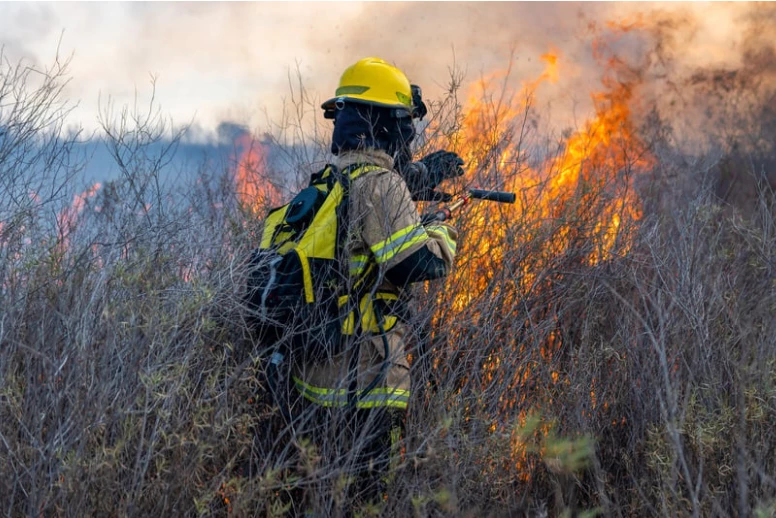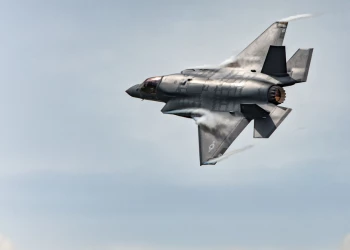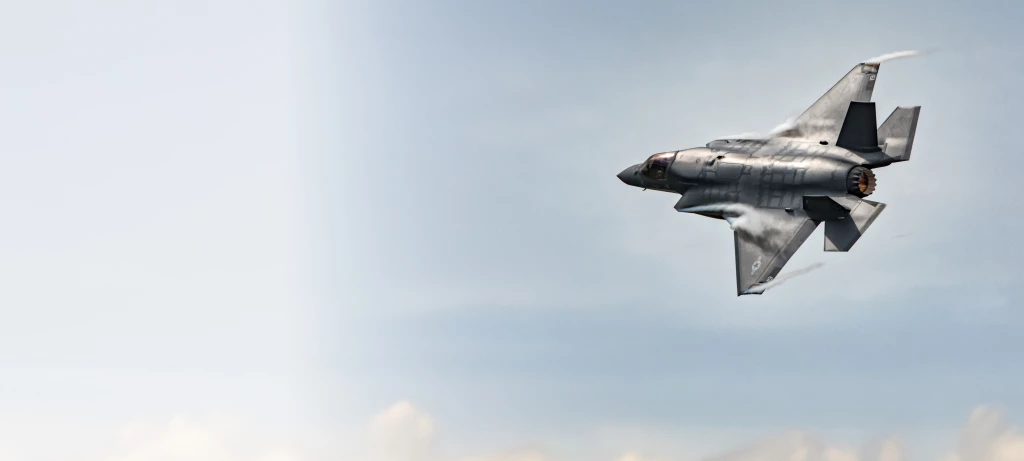Advancing Military Flight Training: Lockheed Martin’s Insights on Next-Gen Solutions
Add bookmark
IDGA’s Military Flight Training event this October 28-29 in San Antonio, Texas is not just an opportunity for DoD personnel to network and collaborate across military units. It will also provide those service members the opportunity to engage with industry partners and understand the work they are doing to deliver next-generation flight training capabilities.
One of the industry partners that will have a large presence at this year’s event is Lockheed Martin, who will be represented by members of its Rotary and Mission Systems’ Training and Logistics Solutions (TLS) and Aeronautics’ Integrated Fighter Group (IFG) business units. TLS provides training and logistics products and services to save time, money and, most importantly, lives, and the IFG is responsible for the development, manufacture and sustainment of the F-16 and F-22 programs as well as the T-50 and other international partnerships. Rob “Skinner” Wilkerson is the TF-50 Capture Director within IFG and has decades of experience in the military aviation space, including time in the F-35 Joint Program Office.
As the TF-50 Capture Director, Rob and his team focus on understanding and anticipating military flight training needs and ensuring fulfillment of those needs through the TF-50 advanced aircraft and associated training systems and services. They explore modern capabilities, ensure global support, and help position the platform for continued reliability to meet the evolving needs of military training worldwide.
Before Rob and his team land in San Antonio this October, he sat down with IDGA to provide an industry perspective of the current challenges in military flight training and the steps Lockheed Martin is taking to partner on solutions.
What are the biggest challenges you are currently seeing in military flight training?
The biggest challenges we currently see stem from a few key areas. One significant issue is the reliance on outdated training systems. Many countries are using simulators, desktop trainers, and courseware that aren't fully modernized, which creates a disconnect between these systems. This lack of integration makes it difficult to accurately define and achieve specific training objectives. A modern, tailored training solution would provide a more effective framework for ensuring these tasks are accomplished.
Another challenge is the push to move more training into simulators due to the high cost of flying actual aircraft and the need to train pilots to quickly adapt to ever-evolving operational requirements. While this shift is cost and time efficient, the mix of simulation and live flying events must be aligned and clearly adapted to specific mission objectives. In high-end training environments, this means incorporating live, virtual, and constructive elements, real-time adaptability, and accurate threat representation. Pilots can rapidly cycle through multiple scenarios in a secure, realistic, cost-effective environment, enabling them to master skills and develop muscle memory at a faster rate.
More traditional environments focus on gradually building skills through a progression from courseware to simulators and eventually to the aircraft itself. By strategically combining simulation with live flying, pilots can apply theoretical knowledge to practical situations. This balanced training approach not only compresses the overall timeline for pilot training but also enhances pilots' readiness, adaptability, and decision-making skills so they are better prepared to safely and effectively conduct their missions. Additionally, simulators must also be dependable and cost-effective to maintain, as breakdowns can be a significant issue. To address these concerns, we're incorporating advancements such as the AMAZE Visual Display System for the F-35 program, which uses LED panels instead of traditional projectors. This approach not only reduces the simulator’s footprint but also increases reliability and lowers maintenance costs. We are planning to build on this technology for the TF-50 program to meet customer requirements more effectively.
Finally, procurement and implementation structure also present a challenge, as different countries and organizations have varying needs. Larger fleets may prefer to buy their training solutions, while others find it more cost-effective to rent or outsource these programs, depending on whether they are focused on basic or advanced fighter training. Lockheed Martin offers flexible ownership models, including private financing options, to make training transformation affordable and tailored to specific customer needs.

One of the top topics of the conference is how militaries are trying to mix live and simulated/synthetic training. As an industry partner, how do you help with that movement?
At Lockheed Martin, our approach always starts by focusing on the specific mission requirements of our customers. We combine the best elements from various platforms across Lockheed Martin and across key industry partners, tailoring proven systems to meet unique customer needs. For example, with the TF-50 program, we are blending KAI’s mature simulator technology with Lockheed Martin’s innovations across other platforms like the F-16 and F-35, delivering a comprehensive training solution. We leverage the advanced simulator environment that KAI (Korea Aerospace Industries) has already developed, which is both cost-effective and highly capable, and then we look to integrate that with cutting-edge systems like the AMAZE visual display system from our F-35 program, providing an optimized training solution that can be adapted for new and existing customers.
Finally, we also explore partnerships with external innovators, such as Red 6, a Lockheed Martin Ventures company specializing in synthetic training environments. By bringing in their solutions, we aim to create a more immersive, adaptable, and effective training environment that blends live and simulated experiences to meet the evolving needs of modern military training.
The US military in particular is moving towards competency training. How do you build your training programs to meet those needs?
To meet these needs, we take a systems engineering approach that is iterative and mission focused. We've applied this approach with our F-35 program and would do the same for platforms like the TF-50. The key is to work closely with the customer to understand the specific learning objectives and critical tasks they need to accomplish. We then build training programs around these objectives, ensuring that they are measurable and aligned with performance standards in a simulated environment. By focusing on what makes someone successful in their mission, we can create training solutions that not only meet but exceed those competency requirements.
We also place a strong emphasis on consistency across our platforms. Whether a customer is flying a basic trainer or transitioning to more advanced systems, we strive to ensure a smooth transition with training solutions that operate on a similar framework. This allows for an easier shift between platforms and ensures that training objectives can be quickly tailored to evolving needs. By making the process adaptable and scalable, we help our customers hit their key performance objectives in a way that supports long-term mission success.
Can you discuss how you work with industry partners to help with sustainment and training programs for the military and what you look for in industry partners?
We are continuously on the search for industry partners that will enhance our sustainment and training programs for the military. What we look for in these partnerships are mature, innovative systems that can augment and improve what we already offer. For example, with the T-50 platform, we leverage KAI’s well-established training systems to maximize efficiency. We also bring in expertise from other Lockheed Martin business areas to strengthen various training platforms across the board.
Again, we also seek out innovative external partners, such as Red 6, whose work in synthetic training environments adds cutting-edge capabilities to our offerings. We invest in these emerging technologies not only to benefit our air platforms but also to enhance training solutions across the broader spectrum of 21st Century Security® needs.
Additionally, we consider government entities as critical partners, whether it’s working directly with the U.S. Department of Defense or foreign governments. They often bring unique training concepts or operational insights that we can align with our solutions, ensuring our training programs are tailored to the specific needs of each military force. This collaborative approach allows us to deliver highly effective, mission-driven training and sustainment programs.
What do you hope MFT attendees will take away from visiting the Lockheed Martin booth at the event?
I think there are two things we want attendees to take away. First, we aim to highlight our deep commitment to military flight training and how we’re innovating across platforms like the F-35, F-16, and F-22 to provide the best training solutions. We’ll showcase our advancements in live, virtual, constructive environments, where we connect simulators across different locations and our leadership in making training environments adaptable, realistic, and operationally relevant, with features like enhanced threat density.
Our second and perhaps most important goal is to demonstrate our readiness to listen to our customers. We want to understand their current challenges, their pain points, and where they see themselves going in the future. This feedback is crucial for us to better tailor our solutions and address their needs in a cost-effective way. We know that many customers are looking to shift more training into simulated environments to reduce the need for live flights, but for this to be successful, we need to ensure our simulators provide the most realistic and mission-relevant training experience possible.
We look forward to engaging in discussions at the conference about the future of military flight training and how we can partner on the best path to get there safely, quickly, and affordably.























